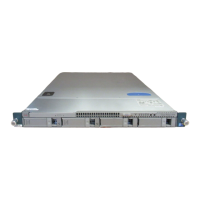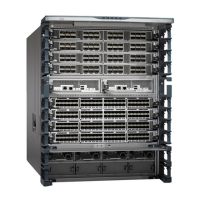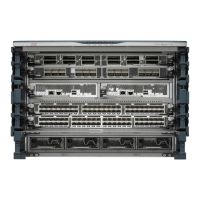1-16
Cisco Nexus 1000V for Microsoft Hyper-V Installation Guide, Release 5.2(1)SM1(5.2)
OL-30997-01
Chapter 1 Installing the Cisco Nexus 1000V for Microsoft Hyper-V
Installing the VSM Software
c. Select the new account and click OK in the Select a Run As Account window.
Step 9 Enter the IP address of the VSM in the connection string, for example, http://10.10.10.4. To use https,
see the
“Installing the VSM Certificate” section on page 1-18
Step 10 In the Providers window, choose the provider as Cisco Systems Nexus 1000V and click Test. This verifies
the communication between the Cisco VSM and the SCVMM.
Step 11 In the Host Groups panel, select a few or all the host groups that can use the virtual switch extension
manager and click Next.
Step 12 In the Summary panel, confirm the settings and click Finish.
Once the Virtual Network Service has been successfully added, it is listed in the main window in the
SCVMM user interface at the path: Fabric>Networking> Network Service.
Creating a Logical Switch in SCVMM
Once the Virtual Switch Extension Manager has been added, create a logical switch on VMM. Define
the extensions and port profiles for the logical switch, create classifications that contain the native port
profile and a port profile for each extension as outlined in the following steps.
To create a logical switch, perform the following steps:
Step 1 In the SCVMM user interface, under Networking, right click Logical Switches and then click Create
Logical Switch. The Create Logical Switch Wizard appears.
Step 2 The Getting Started panel opens up. Review the instructions and click Next.
Step 3 In the General panel, add a name and the description for the logical switch in the Name and Description
fields, for example, N1000V_Test.
Step 4 Click Next.
Step 5 In the Extensions panel, the virtual switch extensions are listed. Choose the extension that you created
in the previous steps. This is listed as a forwarding extension. Do not change any selections of the
auto-selected extensions.
Step 6 Click Next.
Step 7 In the Uplink panel, specify the uplink port profiles that are part of this logical switch. The uplink port
profiles are available for use on the hosts where an instance of the logical switch is created.
–
Choose Team in the Uplink mode field to select multiple uplinks.
Note Even if you use a single uplink or multiple uplinks, the mode should always be Team.
–
In the Uplink port profiles field, click Add. The Add Uplink Port Profile window opens up.
Select a port profile that is available for use by the host physical adapter that connects to this
logical switch.
–
Click Next.
Step 8 In the Virtual Port panel, click Add. The Add Virtual Port window opens up.
–
Choose the VSM by checking the name that was created earlier. For example, Nexus 1000v-Test
check box.
–
Select the port profile from the drop-down menu.

